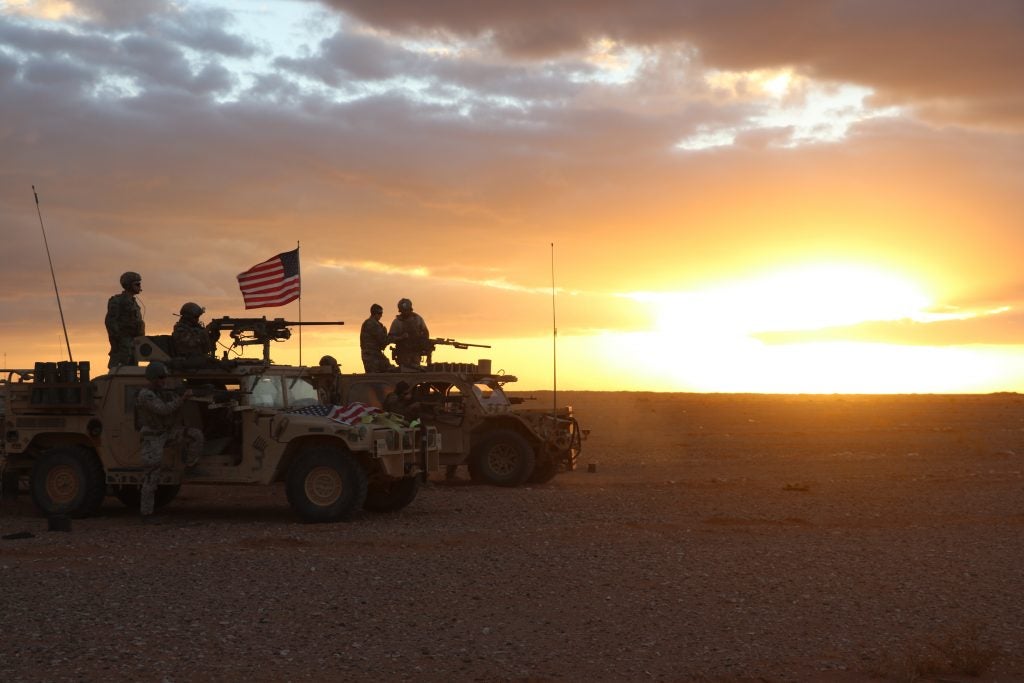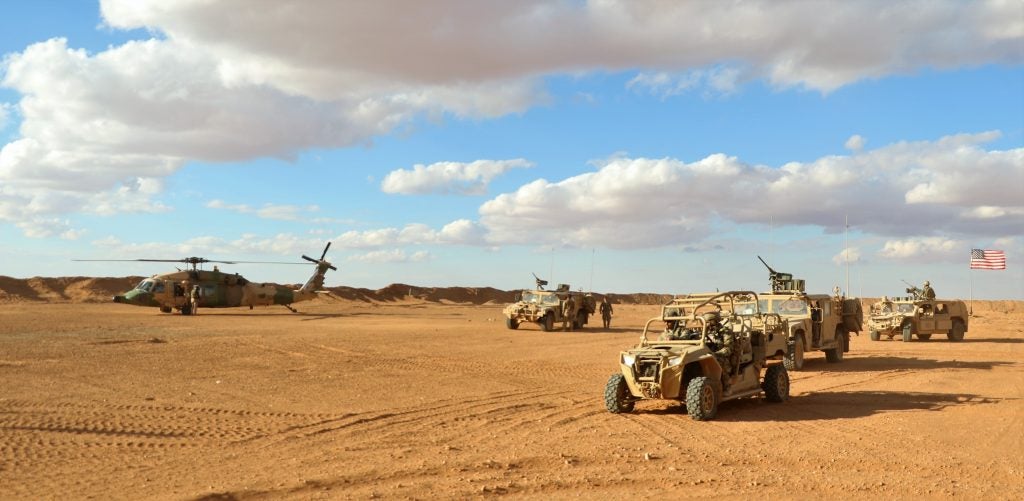The Future of Counter Terrorism Operations Against Islamic State in Syria
The true ramifications of the current US withdrawal from Syria for counter-terrorist (CT) operations will unlikely to be fully realised for some time. What is clear, however, is that the confused and hurried withdrawal of US and European partner forces owed more to politics than any military strategy relating to the counter-Islamic State campaign (known as ‘Defeat Daesh’) under Operation Inherent Resolve.
Western Forces In Syria – a Recap
Coalition SOF (special operations forces) have been conducting operations within Syria, under the umbrella of the Special Operations Joint Task Force- OIR, since 2014 although the first publicly acknowledged deployment was of US Army 5th Special Forces Group personnel the following year. The role of these Green Berets, and later deployments of Marine Raiders and Navy SEALs, was primarily providing mentoring to Syrian Democratic Forces (SDF) including the Kurdish YPG (People’s Protection Units) although they also provided the vital link to Coalition airpower and artillery.
The CT campaign was led by elements of Joint Special Operations Command’s (JSOC) Task Force 27, itself based in Northern Iraq for operations against the resurgent Islamic State and publicly known as the Expeditionary Targeting Force. The Syrian commitment, was formed around a squadron strength rotating deployment from the US Army’s 1st Special Forces Operational Detachment – Delta (Airborne), more commonly known as Delta Force.
The Delta squadron in Syria was reinforced at various times by Ranger company-sized elements and even Marine infantry who provided much needed force protection for the Task Force’s exposed forward operating locations in Syria. Aviation support was provided by the 160th Special Operations Aviation Regiment and covert aviation from Delta’s own E Squadron.
Working with Delta was a reported 200-300 member United Kingdom Special Forces (UKSF) element which utilized American rotary air but brought with them their own ground vehicles including the distinctive Bushmaster which has been photographed at various times over the past several years at hot spots within Syria including on the outskirts of the Islamic State’s so-called capitol, Raqqa. Also present were French special operators, also distinctive in their Nexter Aravis MRAP (mine resistant ambush protected) vehicles. French SOF had been involved in the SDF mentoring effort since 2016, but appear to have joined the CT Task Force in 2018.

With the October withdrawal announcement, the majority of these forces have been withdrawn to Iraq and Jordan (social media footage has shown both Delta Pandur and British SAS Bushmaster vehicles being transported on flat beds back into northern Iraq). A small JSOC element is rumoured to be still maintaining a presence at al-Tanf in south-east Syria but one of the primary JSOC operating locations – the Lafarge cement factory near Kobani in northern Syria – was evacuated and later struck by US air strikes in an attempt to deny it to the enemy.
The Withdrawal’s Impacts
So how will the withdrawal effect the CT campaign against Islamic State? Firstly, it will obviously degrade its performance based purely on distance. The cycle between receiving actionable intelligence and launching on that intelligence will be lengthened with an attendant increase in ‘dry holes’. The quality of that actionable intelligence will also suffer as local intelligence networks, the lifeblood of CT campaigns, will likely wither and assets placed under increased danger, not just from Islamic State cells but from Syrian regime counter-intelligence.
It also means that the ability of the Task Force to rapidly strike local Islamic State targets using ground assault forces will be completely negated, forcing the Task Force to rely solely on rotary aviation infiltration. Raids and aerial interdictions will take longer to arrive at their targets with an increased risk of mishap to their helicopter elements and a corresponding increase in CSAR (combat search and rescue) requirements.
Indeed CSAR assessments may force some prospective missions to be aborted. With Turkish, Russian and Syrian regime forces advancing into formerly Kurdish (and US) held areas, the local air defence threat will increase, leading to a greater risk of a US helicopter being downed over contested territory – a nightmare scenario.
These impacts would have loomed large during the planning for the recent Operation Kayla Mueller in which Islamic State leader al-Baghdadi was killed. Complicated de-confliction was required to allow the helicopters of the Task Force to traverse contested territory. Reports indicate the mission may have even been brought forward due to the withdrawal.
In closing, the withdrawal of the majority of Coalition SOF involved in the Syrian CT campaign against Islamic State is both a strategic and tactical blunder of historic proportions. It will likely enable the resurgence of Islamic State within Syria (and Iraq), give the Syrian regime and their Russian ally free reign in former Kurdish territories, and enable Iran to further consolidate their gains within the region.

